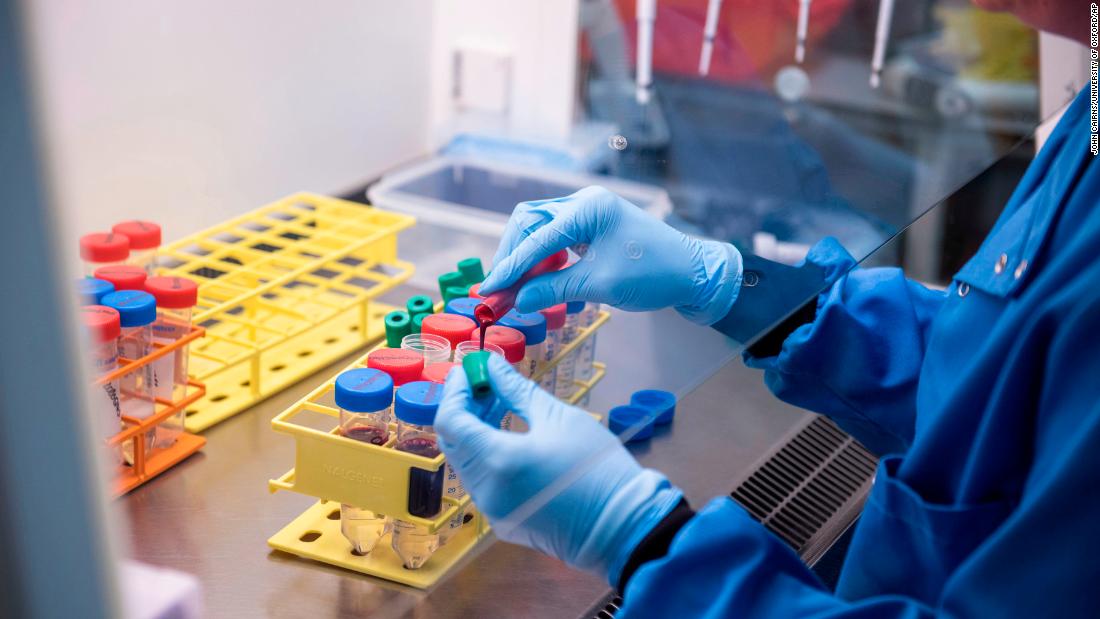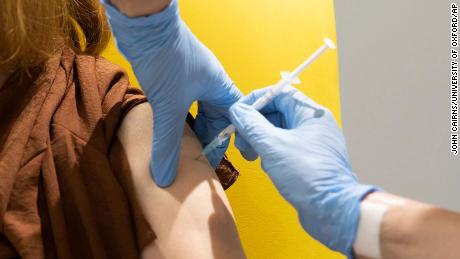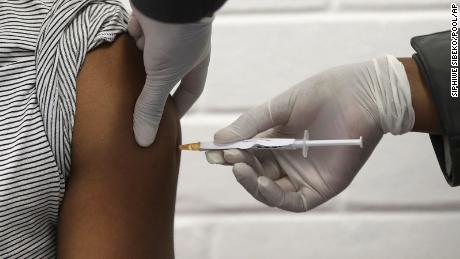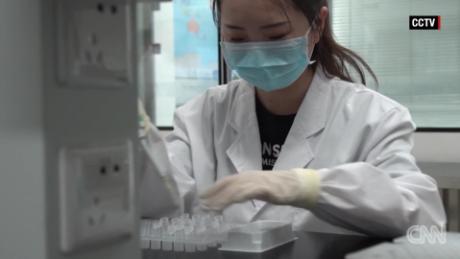The Covid-19 vaccine developed with AstraZeneca has a stated lower effectiveness than others. But it is cheaper and much easier to store and transport.
The stated 70% average efficacy was significantly lower than the 94.5% to 95% reported by the other two leading candidates, Moderna and Pfizer.
“[T]he Pfizer vaccine is committed to its initial doses going to the EU and the US. And Moderna’s supply will be tied up with the US for at least probably the first half of 2021, so in light of that, the Oxford/AstraZeneca vaccine is really good news for the rest of the world,” Andrea Taylor, assistant director of programs at Duke Global Health Innovation Center, told CNN.
AstraZeneca has promised to supply hundreds of millions of doses to low and middle income countries and to deliver the vaccine on a not-for-profit basis to those nations in perpetuity. The vaccine developed at England’s Oxford University is significantly cheaper than the others and, crucially, it would be far easier to transport and distribute in developing countries than its rivals since it does not need to be stored at freezing temperatures.
“I think it’s the only vaccine that can be used in those settings at the current time,” Azra Ghani, chair in infectious disease epidemiology at Imperial College London, told CNN.
The technology
“Pfizer and Moderna require freezer storage, and that just isn’t in place in many settings,” Ghani said.
“Cold chain” refrigeration is the standard storage used globally to deliver vaccines from central locations to local health clinics. AstraZeneca’s vaccine is so far “the only one that can definitely be delivered to those systems,” added Ghani.
The vaccines are based on different technology. AstraZeneca’s offering — like Johnson & Johnson’s vaccine and Russia’s Sputnik V — uses an adenovirus to carry genetic fragments of coronavirus into the body.
The Moderna and Pfizer vaccines use pieces of genetic material called messenger RNA (mRNA) to prompt the body to make synthetic pieces of the coronavirus and stimulate an immune response. “This is a relatively new technology and little is known about the stability of mRNA over time,” Penny Ward, chair of the Education and Standards Committee of the UK’s Faculty of Pharmaceutical Medicine, told CNN.
She said that as Moderna and Pfizer build up information and manufacturing capacity, they may be able to find storage methods at higher temperatures, but the Oxford vaccine “has the potential to be able to be shipped more readily around the globe” using existing supply chains.
It will only be of value, however, if the vaccine’s levels of efficacy are maintained while it’s distributed in developing countries.
Moncef Slaoui, chief adviser to the US government’s Operation Warp Speed, said this week that there were “a number of variables that we need to understand” around the dosage and age differences in the Oxford/AstraZeneca results, after which the ongoing US trial might need to be modified.
On Thursday, a spokesperson for AstraZeneca told CNN that they were currently in discussions with the FDA about including the half-strength dose regimen into their US trials, which currently has around 10,000 participants.
Ayfer Ali, associate professor of international business at Warwick Business School, said the “distribution simplicity” of the AstraZeneca vaccine could “possibly make up for the lower potential efficacy.”
“The actual efficacy of the mRNA vaccines that are more fragile to transport and store may be lower in real world conditions where correct storage of each dose may be hard to verify,” she added.
BioNTech said last week it was working with Pfizer to come up with a formulation that would allow storage of its vaccine at standard temperatures by the second half of 2021. Moderna this month extended its estimate for how long its vaccine could remain stable at refrigerator temperature from an estimated seven to 30 days. This, according to Moderna’s Chief Technical Operations and Quality Officer Juan Andres, “would enable simpler distribution and more flexibility to facilitate wider-scale vaccination in the United States and other parts of the world.”
Pledging to help
AstraZeneca has pledged 300 million doses of its vaccine to COVAX, a partnership between GAVI, the vaccine alliance; the World Health Organization; and the Coalition for Epidemic Preparedness Innovations (CEPI) for ensuring equitable distribution to 92 developing countries. The only other known vaccine developer that has made a pledge of a similar scale is Sanofi, at 200 million doses.
A GAVI representative told CNN that the Serum Institute of India (SII) and Bill and Melinda Gates Foundation would also provide up to 200 million doses of the AstraZeneca and/or Novavax candidate vaccines to lower-income countries. Moderna and Pfizer have not pledged any doses to COVAX.
“[AstraZeneca has] been working with manufacturing experts in that coalition to help source a variety of different manufacturing sites, and of course it’s not just the vaccine itself, it’s also the glass vials that it goes into, the stoppers that go on top of the bottles, and syringes and needles,” said Ward.
“Our vaccine can be deployed quickly in existing health settings, which will help to stop the further spread of this disease while we learn more and more about how to prevent and treat it,” a spokesman for Oxford University told CNN. He added that a range of vaccines would be needed and some could be more effective for different ages and populations.
“The key with any vaccine is the potential for impact on public health, including how quickly it can be distributed. Ours can be quickly and easily distributed around the world, using existing logistics, and easily stored in a fridge,” he said.
Global implications
However, Ghani warned that 20% was “nowhere near the ideal — around 70% — that we would like to see to be able to achieve herd immunity, so some countries will still fall short.”
Duke’s modeling shows that while wealthier countries have purchased billions of doses in advance to increase their chances of covering their population, the developing world will be entirely reliant on COVAX.
Bill Gates said the solution was “not shaming the rich countries that are doing the natural thing of wanting to protect their people,” but was to vastly increase manufacturing capacity.
Stephen Evans, professor of pharmacoepidemiology at the London School of Hygiene & Tropical Medicine, warned that monitoring efficacy and safety issues would be an ongoing challenge in the developing world.
“There may be some adverse effects that would only be apparent in those low and middle income countries; they have different diets, they have different levels of nutrition in general, and different characteristics,” he told CNN.
While Oxford’s vaccine may have particular promise at this stage for helping lower income countries, there are still many caveats over the data that must be resolved before it can be rolled out.
Ultimately, it will be vital to have as many vaccines as possible, to ensure a faster recovery and limit further damage to the world.
CNN’s Harry Clarke-Ezzidio, Jen Christensen, Maggie Fox and Kara Fox contributed reporting.
![]()








